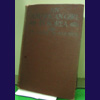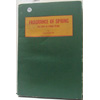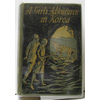|
|
|
| 687 |
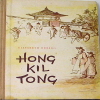
| |
Hong Kil Tong /1952
hard cover, 8 vo.95 pages.First Edition.
The Legend of Hong Kil Dong( The Robin Hood of Korea) of Ho Gyun(1569¡1618), Ho Gyun was one of the famous Korean Writers of Yi Dynasty.
|
Ho Gyun |
Jugendbuchverlag Renst Wundbrlich,Leipzig |
German
|
|
|
| 675 |
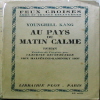
| |
Au Pays du Matin Calme/1951
paperback, 8 vo.285 pages. .The Korean American author's account of his Korean childhood and his move to America. A remarkable book by a young Korean, now and presumably for ever (since he was a rebel against the Japanese annexation) resident in America.
|
Younghill Kang |
Libraire Plon,Paris |
French
|
|
|
| 648 |
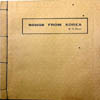
| |
Songs from KOREA/1936
paperback, 107 pages. Bound in silk over boards with hand-tied silk thread holding it together.Very scarce original edition of this collection of translations of Korean ancient poetry in part one. The author's own poems in part two.
|
Y.T.Pyun |
Privately published. |
English
|
|
|
| 644 |
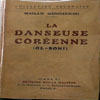
| |
LA DANSEUSE COREENNE (OL-SONI)/1938
paperback,8 vo. first edition.190 pages.
Novel focused on the life of Wol Soni(Kisaeng :Professional Korean Female Entertainer) who lived in the period of the second half of 19th and first half of 20th century
in Korea.
|
Waclaw Sieroszewski |
Editions Edcar Malfere ,Paris |
French
|
|
|
| 627 |
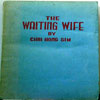
| |
The Waiting Wife(Fragrance of Spring)
/1950
paperback, 8 vo.251 pages. first edition.The story is the impossible love between I-Toreng, the son of a rich mandarin, and Tchoun Hyang , a poor - but nice and beautifull - girl, from Nam Won in the Southern part of KOREA. The novel criticises the weight of traditions and, at the end, the political system of that time. But there is a Happy End. The novel also glorifies the fidelity of Tchoun Hyang.The novel was written by an anonymous Korean writer of Chosen Dynasty.
|
Translator: Chai Hong Sim |
International Cultural Association of Korea,Seoul |
English
|
|
|
| 520 |
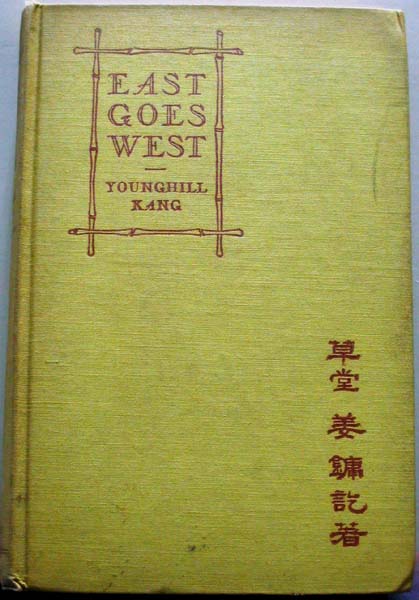
| |
East Goes West/1937
harcover, cloth 8 vo. 401 pages,first edition.Autobiographical account of the author's stay in the US. Author(Korean) emigrated to the US in the 1920s.
|
Kang,Younghill |
Charles Scribner's Sons,New York |
English
|
|
|
| 497 |
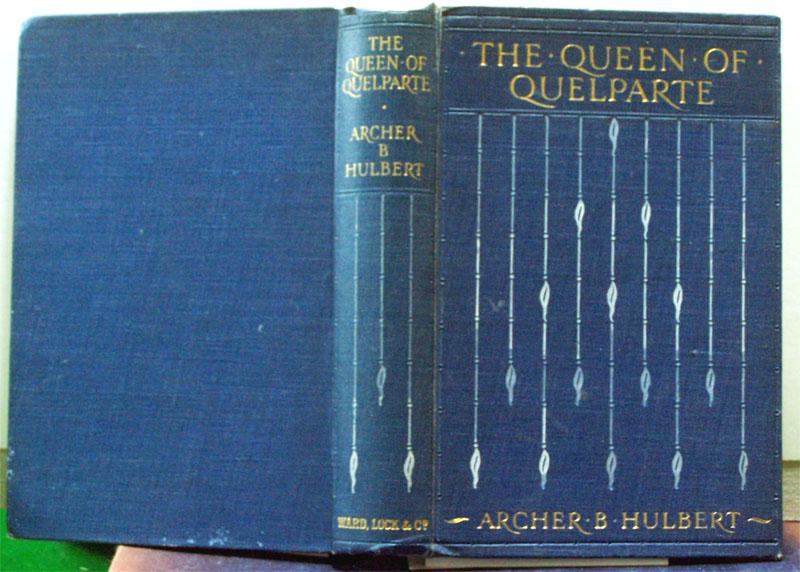
| |
The Queen of Quelpaert/1905
hard cover, cloth.8 vo.330 pages.4th edition(First edition was published in 1901)
Illustrated with 5 full page black and white plates. A novel about the events leading up to the Russian conquest of Korea in 1897/98.
|
Archur B.Hulbert |
Ward,Lock and Company,Limited, London |
English
|
|
|
| 466 |
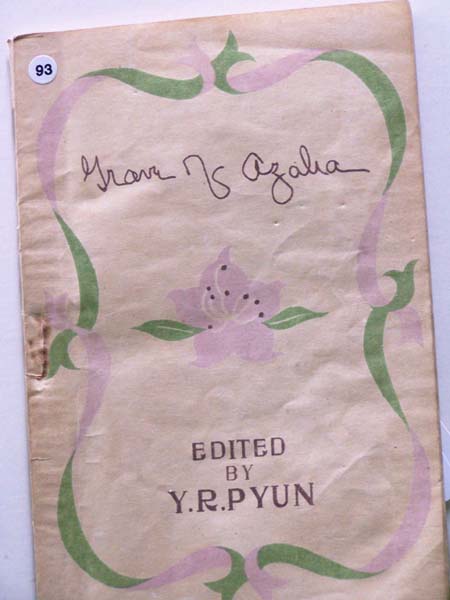
| |
Grove of Azalea/1947
paperback,83 pages. first and only edition.
Anthology of Modern Korean Poetry in English.
Contents:
1)The Korean national Anthem translated from the Korean by Pyun,Young Tai.
2)Poem by Kiusic Kimm(To my M.P. Goodfellow ,May 22,1946)
3)Poem by J.Kyuang Dunn(Mother Korea)
4) Poem by Ik Bong Chang(Eden)
5)Poems by In Soo Lee(Variations on the Theme of Despair before and aftre August 1945)
6) Poems by Young-tai Pyun(To the Candle)(To the Goat Living in a Street Corner)
7)Poems by Younghill Kang(Love gathers into a flame)
8)Poems by Young-ro Pyun
(One Stanza Old Korean Lilts)(To Pseudo-Patriots)((hearing into Rain)
(To Phoenix)(Pilgrimage to Mt.Paik-tu)
(Love's Lament)(Our baby's first Birthday)
(COSMOS ,written in 1914 -when the author was 17)
very rare anthology of Modern Korean Poetry in English.
|
Y.R.Pyun (editor) |
. |
English
|
|
|
| 460 |
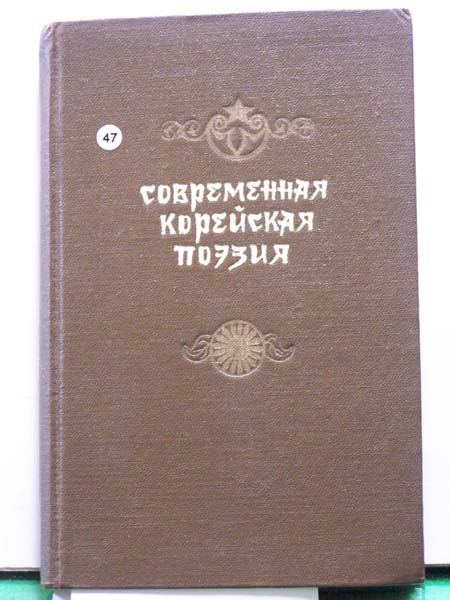
| |
Sovremennaia Koreiskaia Poeziia.
( Anthology of Modern Korean Poetry)
/1950
hard cover,228 pages. 8 vo. first and only edition.illustrated with sketches.
Anthology of Modern Korean Poetry in 4 parts.
1) First part: Poetry on Great Soviet Nation
2) Second part: Poetry on Independent Korea
3) Third part: Poetry on the theme of Japanese Pressure
4) Fourth part:Poetry on the theme of American Imperialism
62 poems written by famous Korean Poets were chosen and translated into Russian by Russian Translators.Very rare source on Korean Literature.
|
A.Tyugai(editor) |
Foreign Languages Publishing House , Moscow |
Others
|
|
|
| 457 |
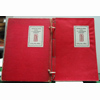
| |
Grass Blades from A Cinnamon Garden/1927
88 pages. Hand Sewn with stiff wrappers. Folding original tri-fold slipcase, Tokyo, Japan: Self-published, 1927 softcover Very Fine/Very Fine. First Edition. An exceptional copy of this lovely book of poems with four original woodcuts by an American woman who was accepted by the Japanese. She lived on the Korean Peninsula (part of Japan at that point).
..................................................................................Lilian M.Miller(1895-1943):An American woman who was accepted by the Japanese. She lived on the Korean Peninsula. She studied art in Japan under Shimada Bokusen and later attended Vassar College in the United States. Her Pasadena home is now the Pacific Asia Museum. ....................... Born in Japan of an American diplomat, she created a grand body of paintings, color woodblock prints & book illustrations of Japan & Korea. Miller [1895-1943] lived and worked in Japan where she was trained as a painter in the Japanese school. A stranger to America, her works are highly collected & appreciated throughout the museum & collector's world. This pioneer work covers as much of her works as could be located & collated into a single catalogue raisonne. In many cases, she even carved her own block for printing. She was also the author and illustrator of her own books. Her memorable title; GRASS BLADES FROM A CINNAMON GARDEN is a great example of her talent . In later years, her father was the American Consul General in Seoul,which gave her an excellent opportunity to live there and paint. ......................... Of all the Western artists who lived in Japan, Lilian Miller was the only one born there. She was schooled under prestigious Japanese masters until her father accepted a position with the State Department in 1909. She graduated from Vassar College and shortly thereafter returned to Japan to study. Her father was now the Consul General in Seoul. By 1919, she was one of 5 artists winning a competition of 500 paintings. She turned to woodblock prints the following year. By 1922, she is said to have produced more than 6,000 prints and holiday cards. Miller¡¯s knowledge of Japanese and its art world, her connections to the diplomatic community and her freedom in Japan from American traditional expectations of marriage and motherhood all contributed to her artistic success. Miller next published Grass Blades, a self illustrated book on poetry. Many poems are declarations or mediations of love for the Orient. She met Grace Nicholson, who dealt in oriental antiquities and this friendship enabled Miller to meet and make use of many important art contacts on her 1929 American trip. She had many exhibitions and was frequently profiled in the newspaper. Miller was admired for doing the entire process of woodblock printing herself including block cutting and printing. During the Depression, Miller evolved to a new style of watercolor that sold well. They were made with a flat japanese brush with japanese pigments and paper. Her father had died and Miller was taking care of her mother, so these funds were important. Internationalism marked Miller¡¯s life and art in the early 1930¡¯s. As a respected member of the American expatriate community with native knowledge of Japan, she was much in demand socially. In 1935, Miller had surgery for a large cancerous tumor including a hysterectomy. In 1936, after Japanese radical officers assassinated several leading politicians, Miller and her mother moved to Honolulu. Miller returned to watercolors, usually working outdoors. Another relocation to San Francisco may been due to larger access to commercial markets. The massive redwoods and cedars reminded her of growing up in Nikko. The attack on Pearl Harbor mobilized Miller to store her brushes and find a way that her knowledge of Japan and Japanese could be of service to her country. She signed on with a Naval counter propaganda branch as a Japanese Censor and Research Analyst. In 1942 another cancerous tumor was discovered. Lilian Miller died in 1943 at age 47 in Pasadena, California. Grigsby, Joan S.(Joan Savell), Illustrated by Lilian May Miller Kobe, Japan: J. L. Thompson & Co. (Retail), Ltd English.................
She was also illustrator of other two books . 1)The Orchid Door : Ancient Korean Poems )
translated by Grigsby, Joan S.(Joan Savell),
Publisher Kobe, Japan: J. L. Thompson & Co. (Retail), Ltd
Pub.Year(s) 1935
Language English
2)Lanterns by the Lake written by Grigsby ,Joan S.(Joan Savell)
Publisher Kegan Paul ,Trench,Trubner & Co.,Ltd.London J.L.Thompson & Co.,Ltd.Kobe,Japan
Pub.Year(s) 1929
Language English
|
Lilian May Miller |
Japan Advertiser Press |
English
|
|
|
|
|
|
| 348 |

| |
The Orchid Door : Ancient Korean Poems )
/1935
Hardcover Cloth. Near Fine/No Jacket. 1935 .First Edition. 8vo. Very scarce original edition of this collection of translations of Korean poetry illustrated with 5 tipped in black and white reproductions of studies by Lilian May Miller (pen and wash would be my guess). There is also one drawing of a butterfly at the end. A striking book: bound in silk over boards with hand-tied silk thread holding it together, with a paper label. The endpapers are decorated with gold leaf.
---------------------------------Lilian M.Miller(1895-1943):An American woman who was accepted by the Japanese. She lived on the Korean Peninsula. She studied art in Japan under Shimada Bokusen and later attended Vassar College in the United States. Her Pasadena home is now the
Pacific Asia Museum. .......................
Born in Japan of an American diplomat, she created a grand body of paintings, color woodblock prints & book illustrations of Japan & Korea. Miller [1895-1943] lived and worked in Japan where she was trained as a painter in the Japanese school. A stranger to America, her works are highly collected & appreciated throughout the museum & collector's world. This pioneer work covers as much of her works as could be located & collated into a single catalogue raisonne. In many cases, she even carved her own block for printing. She was also the author and illustrator of her own books. Her memorable title; GRASS BLADES FROM A CINNAMON GARDEN is a great example of her talent . In later years, her father was the American Consul General in Seoul,which gave her an excellent opportunity to live there and paint.
.........................
Of all the Western artists who lived in Japan, Lilian Miller was the only one born there. She was schooled under prestigious Japanese masters until her father accepted a position with the State Department in 1909. She graduated from Vassar College and shortly thereafter returned to Japan to study. Her father was now the Consul General in Seoul. By 1919, she was one of 5 artists winning a competition of 500 paintings. She turned to woodblock prints the following year. By 1922, she is said to have produced more than 6,000 prints and holiday cards. Miller¡¯s knowledge of Japanese and its art world, her connections to the diplomatic community and her freedom in Japan from American traditional expectations of marriage and motherhood all contributed to her artistic success.
Miller next published Grass Blades, a self illustrated book on poetry. Many poems are declarations or mediations of love for the Orient. She met Grace Nicholson, who dealt in oriental antiquities and this friendship enabled Miller to meet and make use of many important art contacts on her 1929 American trip. She had many exhibitions and was frequently profiled in the newspaper. Miller was admired for doing the entire process of woodblock printing herself including block cutting and printing. During the Depression, Miller evolved to a new style of watercolor that sold well. They were made with a flat japanese brush with japanese pigments and paper. Her father had died and Miller was taking care of her mother, so these funds were important.
Internationalism marked Miller¡¯s life and art in the early 1930¡¯s. As a respected member of the American expatriate community with native knowledge of Japan, she was much in demand socially. In 1935, Miller had surgery for a large cancerous tumor including a hysterectomy. In 1936, after Japanese radical officers assassinated several leading politicians, Miller and her mother moved to Honolulu. Miller returned to watercolors, usually working outdoors. Another relocation to San Francisco may been due to larger access to commercial markets. The massive redwoods and cedars reminded her of growing up in Nikko.
The attack on Pearl Harbor mobilized Miller to store her brushes and find a way that her knowledge of Japan and Japanese could be of service to her country. She signed on with a Naval counter propaganda branch as a Japanese Censor and Research Analyst. In 1942 another cancerous tumor was discovered. Lilian Miller died in 1943 at age 47 in Pasadena, California.
|
Grigsby, Joan S.(Joan Savell), Illustrated by Lilian May Miller
|
Kobe, Japan: J. L. Thompson & Co. (Retail), Ltd |
English
|
|
|
| 340 |
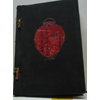
| |
Lanterns by the Lake/1929
hard cover,cloth ,8 vo.136 pages.Japanese-style binding.first edition. very scare original edition of this collection of translations of Japanese and Korean poems illustrated with 5 tipped in black and white reproductions of studies by Lilian May Miller (pen and wash )
POEMS from Korea:
The Islands of Chemulpo,
Korean Night,
The Way to the Well,
The Quince Tree,
The Road to Peking,
Love Made a Lotus Flower,
Her Fan,
Hairpins of Jade,
The Ginko Tree,
To the Old Lady,
A Cherry Night in Korea.
---------------------------------Lilian M.Miller(1895-1943):An American woman who was accepted by the Japanese. She lived on the Korean Peninsula (part of Japan at that point). She studied art in Japan under Shimada Bokusen and later attended Vassar College in the United States. Her Pasadena home is now the Pacific Asia Museum. ...................
Born in Japan of an American diplomat, she created a grand body of paintings, color woodblock prints & book illustrations of Japan & Korea. Miller [1895-1943] lived and worked in Japan where she was trained as a painter in the Japanese school. A stranger to America, her works are highly collected & appreciated throughout the museum & collector's world. This pioneer work covers as much of her works as could be located & collated into a single catalogue raisonne. In many cases, she even carved her own block for printing. She was also the author and illustrator of her own books. Her memorable title; GRASS BLADES FROM A CINNAMON GARDEN is a great example of her talent . In later years, her father was the American Consul General in Seoul,which gave her an excellent opportunity to live there and paint.
.........................
Of all the Western artists who lived in Japan, Lilian Miller was the only one born there. She was schooled under prestigious Japanese masters until her father accepted a position with the State Department in 1909. She graduated from Vassar College and shortly thereafter returned to Japan to study. Her father was now the Consul General in Seoul. By 1919, she was one of 5 artists winning a competition of 500 paintings. She turned to woodblock prints the following year. By 1922, she is said to have produced more than 6,000 prints and holiday cards. Miller¡¯s knowledge of Japanese and its art world, her connections to the diplomatic community and her freedom in Japan from American traditional expectations of marriage and motherhood all contributed to her artistic success.
Miller next published Grass Blades, a self illustrated book on poetry. Many poems are declarations or mediations of love for the Orient. She met Grace Nicholson, who dealt in oriental antiquities and this friendship enabled Miller to meet and make use of many important art contacts on her 1929 American trip. She had many exhibitions and was frequently profiled in the newspaper. Miller was admired for doing the entire process of woodblock printing herself including block cutting and printing. During the Depression, Miller evolved to a new style of watercolor that sold well. They were made with a flat japanese brush with japanese pigments and paper. Her father had died and Miller was taking care of her mother, so these funds were important.
Internationalism marked Miller¡¯s life and art in the early 1930¡¯s. As a respected member of the American expatriate community with native knowledge of Japan, she was much in demand socially. In 1935, Miller had surgery for a large cancerous tumor including a hysterectomy. In 1936, after Japanese radical officers assassinated several leading politicians, Miller and her mother moved to Honolulu. Miller returned to watercolors, usually working outdoors. Another relocation to San Francisco may been due to larger access to commercial markets. The massive redwoods and cedars reminded her of growing up in Nikko.
The attack on Pearl Harbor mobilized Miller to store her brushes and find a way that her knowledge of Japan and Japanese could be of service to her country. She signed on with a Naval counter propaganda branch as a Japanese Censor and Research Analyst. In 1942 another cancerous tumor was discovered. Lilian Miller died in 1943 at age 47 in Pasadena, California.
|
Joan S.(Joan Savell)Grigsby |
Kegan Paul ,Trench,Trubner & Co.,Ltd.London
J.L.Thompson & Co.,Ltd.Kobe,Japan |
English
|
|
|
| 318 |
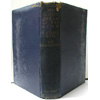
| |
The Cloud Dream of the Nine/1922
hard cover,307 pages. First and only edition.
A Korean Novel: A story of the times of the Tangs of China about 840.A.D.
by Kim,Man-Choong ,resident of the Confucian College (1617-1682)
Trans lated by James S.Gale ,30 years president in Korea with an introduction by Elspet Keith Robertson Scott and Sixteen Illustrations.
An ancient tale of polygamy written by a Korean scholar and translated by one of the chief western interpreters of Korean literature(Annotation is based on KOREA,Library of Congress,1950)
|
Kim,Man-Choong |
Daniel O'Connor ,Lond |
English
|
|
|
| 314 |
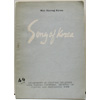
| |
Song of Korea/1954
paperback,79 pages, first edition
|
Min Byong Kyun |
Department of Cultural Relations with Foreign Countries,Ministry of Cultural and Propaganda,DPRK(Pyongyang) |
English
|
|
|
| 304 |

| |
The Grass Roof/1947
hard cover, cloth,8vo.367 pages.
First edition was published in 1931.This book has won unanimous admiration.
"From intaglios of rural Korea the author turns toa bold panorama of Far Eastern
exprience.For color,vigor,and vitality,it puts to shame the current literature of Japan and China-New York Times" /The Human Storyof one man told sincerely and frankly with a wealth of detail which makes a picture both vivid and moving
.A human document of the greatest value-New York Herald Tribune"/ "For history,for
social change,and for simple human interest the book has a strong appeal-Philadelphia Public Ledger"/ "It sis almost the only book that can introduce us to a virtually unknown people .It is interesting,important.memorable-The New Public".
The author was born in Korea,the Hermit Kingdom,in 1903,in an isolated grosaa-roofed vilage,like the one described in this stroy.
He was taught by his uncles,who were poets,and therefore men of consequence in the village.From them he learned the Confucian doctrines and Korean customs-and these until he was twelve.At that age he went to Tokyo and spent four years in a Japanese school.
When he returned to Korea he was not the same person:he had became imbued with a intense desire to learn all he could about Western civilization and ideas. For two years he studied and taught in a missionary school.In 1919 he participated in the revolution against Japanese domination ,and spent one year in jail.
A year later came the chance to go to harvard,and from 1920 on he has libed in this country.He disd postgraduate work at Harvard,and for two years prepared
and secured articles on Oriental subjetcts for the Encyclopaedia Britannica.In 1929 he was appointed lecture on comparative literature in the English Department of New York University.
|
Younghill Kang |
Charles Scribner's Sons,N.Y. |
English
|
|
|
| 300 |
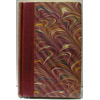
| |
Anthologie de L'amour Asiatique/1907
hard cover,377 pages.8vo.extremely rare.Soft Cover.
Korea section: from page 185 to page 188.
Contemporary quarter red morocco over red marbled boards, gilt lettering and dec. to spine, teg, original wrappers preserved, mild rubbing at spine extremes, otherwise fine. First Trade Edition, originally issued in 1906 in an edition of 55 copies. Anthology of erotic (though not explicit) poetry from Asia. This edition not found in Bibliotheque National; no editions in OCLC, and not found in any of the standard references for erotica or French literature. Cf. Bibliotheque National.
|
Adolphe Thalasso |
Societe DV Mercvre de France,Paris |
French
|
|
|
|
|
| 240 |

| |
Korea /1954
paperback,36 pages.published in Ankara.
The poems on Korea were written in Turkish by Mrs.Enise kantamir,teacher of Turkish at Ataturk Lycee,Ankara.Translated into English by Irfan Sahinbas(Professor of English ,Ankara Univ.) and Sidney Burks (director of Courses-American Association,Ankara)
|
Enise Kantemir |
.. |
English
|
|
|
| 139 |
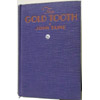
| |
The Gold Tooth/1927
Hard cover,436 pages.Lost race novel with science fiction elements - a plateau in North Korea reveals a society of great age who posess a gold-coloured element which cures disease. Adventure novel of the discovery of an ancient race in the mountains of North Korea who possess a new element that is a powerful catalyst for transforming mercury into gold.
|
John Taine |
E.P.Dutton & Company,New York |
English
|
|
|
| 82 |
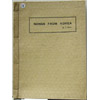
| |
Songs from Korea/1936
paperback,107 pages.
Author was former Prime Minister of Republic of Korea.
A good study of Korean Si-Jo.
Si-Jo is the time-honoured form of poetry in pure Korean tongue,distinct
from those of Chinese poems.
|
Y.T.Pyun |
Privately published by the Author |
English
|
|
|
| 62 |
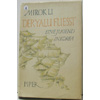
| |
Der Yalu Fliesst /1946
hard cover,219 pages. 1946 first edition.
The author left Seoul to study medicine in Bavaria, where he lived the rest of his life, dying in 1950. This memoir of a Korean childhood was written in German.
|
Mirok Li |
R.Piper & Co./Verlag/Munchen |
German
|
|
|
| 17 |

| |
LE BOIS SEC REFLEURI,Roman Coreen./1895
Paperback,192 pages.
A kind of historical novel going through the entire history of Korea.A symbol for the eternal rebirth of Korea.
The author was a Korean and lived in Paris at that time when he published
this novel in France.
|
Hong-Tjyong-Ou |
Ernest Leroux,Editeur,Paris. |
French
|
|
|
| 15 |
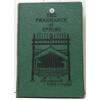
| |
The Fragrance of Spring/1929
Hardcover,136 pages.Illustrated with 7 photographs.First and only
edition.The story is the impossible love between I-Toreng, the son of a rich mandarin, and Choon Hyang, a poor - but nice and beautifull - girl, from Nam Won in the Southern part of Korea. The novel criticises the weight of traditions and, at the end, the political system of that time. But there is a Happy End. The novel also glorifies the fidelity of Tchoun Hyang.The novel was written by an anonymous Korean writer of Chosen Dynasty.
|
Edward J.Urquhart(translator) |
Sijosa,Seoul |
English
|
|
|
| 14 |
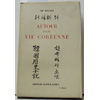
| |
AUTOUR d une VIE COREENNE/1929
Paperback,189 pages.
The author was a KOREAN ,who lived in Paris and worked in his charater of Consul of Provisional Government of Korea located in Shanghai during the Japanese Rule.
He wrote this novel to declare that Korea should be liberated from unjustified Japanese Rule.
|
Seu Ring-Hai( Seo Young-Hae in English) |
Editions Agence KOREA,Paris. |
French
|
|
|
| 13 |

| |
Printemps Parfume( The Fragrance of
Spring),Roman Coreen./1892
Paper back,140 pages. with 26 illustrations.
The book "Printemps parfume" was translated by Rosny and Mr Hong Tjyoung Ou(Korean), who was living in France at that time.
In the notice, they say that it is the first Korean novel translated in french, and maybe the first translated in a European language.
They also say that there is no author name, because the novel criticises the government.
The story is the impossible love between I-Toreng, the son of a rich mandarin, and Tchoun Hyang (parfumed spring = printemps parfume in french), a poor - but nice and beautifull - girl, from Nam Won in the Southern part of KOREA.
The novel criticises the weight of traditions and, at the end, the political system of that time. But there is a Happy End. The novel also glorifies the fidelity of Tchoun Hyang.The novel was written by an anonymous Korean writer of Chosen Dynasty.Text was translated from KOREAN into FRENCH.
|
J.H.Rosny(translator) |
E.Dentu ,Editeur,Paris |
French
|
|
|
|
[1] |







